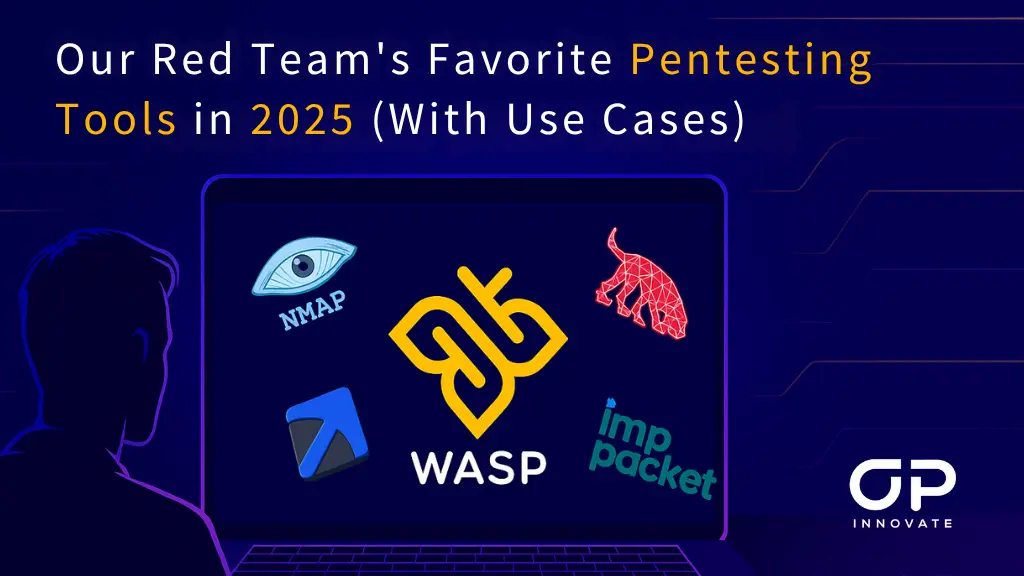So, you’ve finished a recent penetration test and have a list of vulnerabilities which you need to take care of. What now? How do we go about conducting efficient vulnerability remediation? Let’s take a deep dive and learn some best practices and introduce you to useful tools and solutions. By the end, you’ll have the knowledge and resources to effectively address vulnerabilities and enhance your security.
Understanding Vulnerability Remediation
In order to understand vulnerability remediation in cybersecurity, it is important to first grasp the concept of what a vulnerability actually is.
A vulnerability refers to a weakness or flaw in a system, network, or application that can be exploited by attackers.
Once a vulnerability is identified, remediation comes into play, which refers to the process of addressing and fixing the vulnerability to prevent any potential attacks or breaches.
What is a Vulnerability?
A vulnerability is a weakness in a system that could be exploited by attackers. When it comes to vulnerability management, it is crucial to understand what a vulnerability is and how it can be identified and addressed.
Vulnerability assessment and vulnerability scanning are two important processes that help in identifying vulnerabilities within a system. Once vulnerabilities are identified, it is essential to take action for vulnerability remediation. This is where penetration testing comes into play.
By simulating real-world attacks, penetration testing helps identify the potential risks and vulnerabilities that need to be addressed. Once the vulnerabilities are identified, a thorough vulnerability remediation plan can be put in place to fix these weaknesses and secure the system.
Overall, understanding vulnerabilities and implementing effective vulnerability management processes are vital in ensuring the security of your systems and protecting against potential attacks.
What Does Remediation Mean in Cybersecurity?
You need to understand what remediation means in cybersecurity and how it can help address and fix vulnerabilities in your system.
Remediation refers to the process of identifying, prioritizing, and resolving vulnerabilities in your network or system. It is a crucial component of a comprehensive vulnerability management program.
Here are three reasons why remediation is important:
- Protection: By addressing vulnerabilities promptly, you can protect your system from potential exploitation by malicious actors.
- Compliance: Remediation helps ensure that your organization meets regulatory requirements and industry standards.
- Reputation: Proactive remediation demonstrates your commitment to security, enhancing your reputation and building trust with clients and partners.
To initiate the remediation process, you must follow these steps:
- Identify vulnerabilities through regular vulnerability assessments or penetration testing.
- Prioritize vulnerabilities based on their severity and potential impact.
- Develop and implement a remediation plan to address the identified vulnerabilities in a timely manner.
The Vulnerability Remediation Process

When it comes to vulnerability remediation, there are several key points you need to consider.
First, you need to focus on finding vulnerabilities within your system or network.
Once you have identified these vulnerabilities, it is important to prioritize them based on their potential impact and likelihood of exploitation.
After prioritization, you can then proceed with fixing the vulnerabilities and implementing necessary patches or updates.
Lastly, it is crucial to continuously monitor your system to ensure that any new vulnerabilities are promptly addressed and remediated.
Finding Vulnerabilities
To effectively find vulnerabilities, start by conducting a thorough scan of your system using specialized tools. This step is crucial in identifying any weaknesses in your system’s security. Here’s how you can approach the process:
- Scan your system: Utilize vulnerability scanning tools to perform a comprehensive analysis of your system. These tools can help you identify potential vulnerabilities, such as outdated software, misconfigurations, or weak passwords.
- Patch vulnerabilities: Once you have identified the vulnerabilities, it is essential to promptly patch them. This involves applying the necessary updates and fixes to address the identified weaknesses. Regularly updating your system is crucial to ensure that it remains secure against potential threats.
- Involve your security team: Collaboration with your security team is vital during the vulnerability remediation process. They can provide valuable insights and guidance to ensure that the identified vulnerabilities are effectively remediated. Work closely with your team to prioritize and address the vulnerabilities based on their severity and potential impact.
Prioritizing Vulnerabilities
Now that you’ve identified the vulnerabilities in your system, it’s important to prioritize them for remediation.
The vulnerability remediation process involves assessing the severity and potential impact of each vulnerability to determine which ones should be addressed first. Prioritization is crucial because it allows you to focus your remediation efforts on the most critical and high-risk vulnerabilities.
To prioritize vulnerabilities, start by considering the potential impact they could have on your system and the likelihood of them being exploited. High-risk vulnerabilities that are easily exploitable should be given top priority for remediation. Additionally, consider any regulatory or compliance requirements that may dictate the urgency of certain vulnerability remediation efforts.
Fixing Vulnerabilities
You should prioritize fixing the vulnerabilities that pose the highest risk to your system’s security. Vulnerability remediation is crucial in protecting your system from potential attacks. However, it can be challenging to address all security vulnerabilities effectively.
Here are three key reasons why you need to focus on fixing high-risk vulnerabilities:
- Immediate threat: High-risk vulnerabilities pose an immediate threat to your system’s security, leaving it susceptible to exploitation by malicious actors. Prioritizing their remediation minimizes the chances of a successful attack.
- Proactive defense: Addressing high-risk vulnerabilities demonstrates your commitment to proactive defense. By taking swift action, you show that you prioritize the security of your system and data.
- Patching process efficiency: Fixing high-risk vulnerabilities first allows you to streamline the remediation process. By concentrating on critical vulnerabilities, you can allocate resources more efficiently and address the most significant security risks promptly.
Monitoring Vulnerabilities
Monitoring your system for new vulnerabilities is essential to staying ahead of potential security threats. After conducting vulnerability testing and identifying common vulnerabilities, it is crucial to establish a robust monitoring process.
Start by setting up a vulnerability database to track and manage all identified vulnerabilities. This will allow your remediation team to efficiently prioritize and address each vulnerability.
Regularly scan your system using vulnerability assessment tools to identify any new vulnerabilities that may arise. Utilize automated systems to continuously monitor for potential threats and promptly notify your remediation team.
Improving the Vulnerability Remediation Process
In this discussion, you will explore various strategies for improving the vulnerability remediation process.
You will start by examining different vulnerability management solutions that can streamline and automate the process, ensuring that all vulnerabilities are identified and addressed promptly.
Next, you will learn about the importance of implementing vulnerability metrics and key performance indicators (KPIs) to measure the effectiveness of your remediation efforts.
Additionally, you will discover the benefits of deploying tools for reporting, which can provide valuable insights and help track progress.
Lastly, you will explore the concept of embedding security into CI/CD pipelines, ensuring that vulnerabilities are addressed early in the development process.
Vulnerability Management Solutions
Implementing vulnerability management solutions is crucial for effectively addressing and resolving security vulnerabilities discovered during a pen test. These solutions play a vital role in ensuring the overall security of your systems and protecting sensitive data.
Here are three reasons why you should prioritize vulnerability management:
- Efficiency: By using vulnerability management solutions, you can streamline the process of identifying and prioritizing vulnerabilities, allowing you to allocate resources effectively and address the most critical issues first.
- Timeliness: These solutions provide real-time monitoring and alerting, enabling you to respond quickly to new vulnerabilities. This allows you to stay one step ahead of potential threats and minimize the risk of exploitation.
- Compliance: Vulnerability management solutions help you meet regulatory requirements by providing comprehensive reports on your security posture. This not only helps you avoid penalties but also builds trust with your customers and stakeholders.
Implementing Vulnerability Metrics and Key Performance Indicators (KPIs)
To effectively measure the impact of vulnerability management solutions, you can rely on implementing vulnerability metrics and key performance indicators (KPIs) that provide valuable insights into the effectiveness of your security measures.
After conducting a pen test and identifying vulnerabilities in your system, the next step is vulnerability remediation. By implementing vulnerability metrics, you can track the progress of your remediation efforts. These metrics can include the number of vulnerabilities identified, the time it takes to remediate them, and the percentage of vulnerabilities that have been successfully addressed.
Additionally, key performance indicators (KPIs) can be used to assess the overall effectiveness of your vulnerability management program. KPIs such as the average time to remediate vulnerabilities and the reduction in the number of critical vulnerabilities over time can help you gauge the success of your efforts and make informed decisions to improve your security posture.
Deploying Tools for Reporting
Once you have identified vulnerabilities in your system, you can deploy tools for reporting to effectively track and monitor the progress of your remediation efforts. This step is crucial in ensuring that vulnerabilities are addressed promptly and efficiently.
Here are three reasons why deploying reporting tools is essential for your remediation program:
- Visibility: Reporting tools provide a clear and concise overview of the vulnerabilities discovered in your system. This visibility allows you to prioritize remediation efforts based on the severity of each vulnerability, as determined by the Common Vulnerability Scoring System (CVSS).
- Accountability: By utilizing reporting tools, you can assign responsibility for each vulnerability to the appropriate team or individual. This ensures that remediation efforts are properly coordinated and progress is closely monitored.
- Efficiency: Reporting tools streamline the vulnerability management process by automating data collection and analysis. This saves time and resources, allowing you to focus on remediation rather than manual reporting.
Embedding Security into CI/CD Pipelines
Embedding security into CI/CD pipelines is crucial for ensuring that vulnerabilities are addressed and resolved as early as possible in the software development process. By integrating security controls into your CI/CD pipelines, you can proactively identify and remediate vulnerabilities before they become major issues.
This approach allows you to catch vulnerabilities early on and fix them quickly, preventing potential security breaches and reducing the overall risk to your system.
When performing a pen test, it is important to embed security practices throughout the entire CI/CD pipeline, from code development to deployment. By doing so, you can ensure that security is a fundamental part of your software development process, allowing for continuous monitoring and improvement of your security posture.
Best Practices for Vulnerability Remediation

When it comes to vulnerability remediation, there are several best practices you should consider.
First, perform continuous scans to ensure that any new vulnerabilities are identified and addressed promptly.
Next, establish a strong set of key performance indicators (KPIs) to measure the effectiveness of your remediation efforts.
Additionally, it’s crucial to understand your IT infrastructure thoroughly to identify the most critical areas that need attention.
Lastly, leverage the large database of vulnerability checks available to you, and prioritize scanned vulnerability reports based on the severity and impact they pose to your systems.
Perform Continuous Scans
To perform continuous scans, you should regularly scan your systems for vulnerabilities. This is crucial in ensuring that you stay ahead of potential security risks and unauthorized access. By performing continuous scans, you can proactively identify and address vulnerabilities before they are exploited by malicious actors.
Here are three reasons why performing continuous scans is essential:
- Stay one step ahead: Continuous scans allow you to identify vulnerabilities in real time, enabling you to take immediate action to remediate them. This helps you stay proactive in protecting your systems and data.
- Minimize the impact: By regularly scanning for vulnerabilities, you can minimize the potential impact of a breach or unauthorized access. Timely identification and remediation can prevent significant harm to your organization.
- Maintain a strong security posture: Performing continuous scans helps you maintain a strong security posture by ensuring that any vulnerabilities are promptly addressed. This helps you demonstrate your commitment to security and protects your organization from potential reputational damage.
Establish a Strong Set of Key Performance Indicators (KPIs)
Establishing a strong set of KPIs is crucial for measuring the effectiveness of your security measures and ensuring that your organization is on track to meet its security goals.
After conducting a pen test and identifying vulnerabilities, it is important to establish KPIs to track your progress in remediation efforts. These KPIs will help you gauge the effectiveness of your vulnerability remediation activities and ensure that no critical issues are left unaddressed.
By setting clear and measurable goals, such as reducing the number of high-risk vulnerabilities or improving the average time to remediate, you can prioritize your efforts and allocate resources accordingly.
Regularly monitoring and analyzing these KPIs will enable you to evaluate the success of your remediation efforts and make necessary adjustments to strengthen your security posture.
Understand Your IT Infrastructure
Understanding your IT infrastructure is essential for identifying potential vulnerabilities and ensuring that your security measures are effectively implemented. By having a comprehensive understanding of your IT infrastructure, you can better detect and mitigate any potential risks that may arise. Here are three key reasons why understanding your IT infrastructure is crucial for your organization’s security:
- Detect Vulnerabilities: By understanding your IT infrastructure, you can proactively detect any vulnerabilities in your network, applications, or systems. This allows you to take appropriate actions to address these vulnerabilities and prevent potential unauthorized access or data breaches.
- Application Security: Understanding your IT infrastructure helps you assess the security measures implemented in your applications. This includes authentication procedures, access controls, and encryption protocols. By identifying any gaps in application security, you can make necessary improvements to protect your sensitive data.
- Risk Level Assessment: Understanding your IT infrastructure enables you to assess the risk level associated with different components, such as servers, databases, or network devices. This helps you prioritize and allocate resources effectively to address the most critical vulnerabilities and reduce the overall risk level in your organization.
Leverage the Large Database of Vulnerability Checks
Now that you have a good understanding of your IT infrastructure, it’s time to leverage the large database of vulnerability checks to perform vulnerability remediation.
After conducting a vulnerability scan, you may have discovered vulnerabilities that need to be addressed. This is where the remediation guidance comes into play. It provides you with step-by-step instructions on how to fix the vulnerabilities and secure your systems.
It’s important to note that software vendors often release patches or updates to address these vulnerabilities. Make sure to regularly check for updates from your software vendors and apply them promptly.
Prioritize Scanned Vulnerability Reports
It’s time to prioritize the scanned vulnerability reports to determine the most critical issues that need immediate attention. When it comes to vulnerability remediation, it’s crucial to address the identified vulnerabilities based on their level of risk. Here’s how you can effectively prioritize the vulnerabilities:
- Assess the potential impact: Consider the potential consequences of each vulnerability. Is it a high-risk vulnerability that could lead to data breaches or system compromise? Or is it a low-risk vulnerability that poses minimal threat?
- Evaluate the exploitability: Determine the likelihood of an attacker exploiting the vulnerability. Is it a well-known exploit with widely available tools, or is it a complex vulnerability that requires specialized knowledge?
- Consider the affected assets: Take into account the criticality and importance of the assets that are vulnerable. Are they key systems or sensitive data that must be protected at all costs?
Ensure Timely Remediation
To ensure timely remediation, you should prioritize the vulnerabilities based on their potential impact, exploitability, and affected assets. This will help you allocate your resources effectively and address the most critical issues first.
Vulnerability remediation is a crucial step in maintaining the security of your systems and protecting your organization from potential attacks. One way to expedite the remediation process is by deploying patches as soon as they become available. This includes both operating system and application patches.
Additionally, consider leveraging automation to streamline the remediation process further. Automation tools can help scan for vulnerabilities, deploy patches, and monitor for any new vulnerabilities that may arise.
Vulnerability Remediation Tools and Solutions
In this discussion, we will explore the key points surrounding Op Innovate WASP, a vulnerability remediation tool and solution.
With Op Innovate WASP, you can effectively address vulnerabilities identified during penetration testing by providing a comprehensive and streamlined approach to remediation.
Op Innovate WASP
The Op Innovate WASP solution can help streamline the vulnerability remediation process after a pen test. Here’s why you should consider using it:
- Efficiency: With Op Innovate WASP, you can automate the identification and prioritization of vulnerabilities found during the pen test. This saves you time and ensures that critical issues are addressed promptly.
- Collaboration: The solution allows for easy communication and collaboration between different teams involved in the remediation process. This fosters a more efficient and coordinated effort, leading to faster resolution of vulnerabilities.
- Tracking and Reporting: Op Innovate WASP provides comprehensive tracking and reporting capabilities, allowing you to monitor the progress of vulnerability remediation and generate detailed reports for compliance purposes.
Conclusion
With proper vulnerability remediation, you can ensure a secure conclusion to your pen test.
After identifying vulnerabilities during your pen test, it is crucial to take immediate action to remediate them. Addressing these vulnerabilities promptly will help mitigate the risk of potential exploitation and protect your systems from unauthorized access.
Start by prioritizing the vulnerabilities based on their severity and potential impact. Then, develop a comprehensive plan to remediate each vulnerability, considering the specific context of your environment. Implementing patches, updating software, and configuring security settings are some common remediation techniques.
Regularly monitor and reassess your systems to ensure that no new vulnerabilities arise. By actively addressing vulnerabilities through proper remediation, you can confidently conclude your pen test, knowing that your systems are secure.









